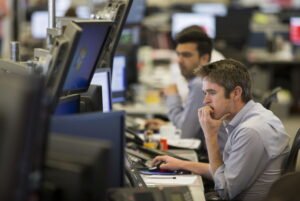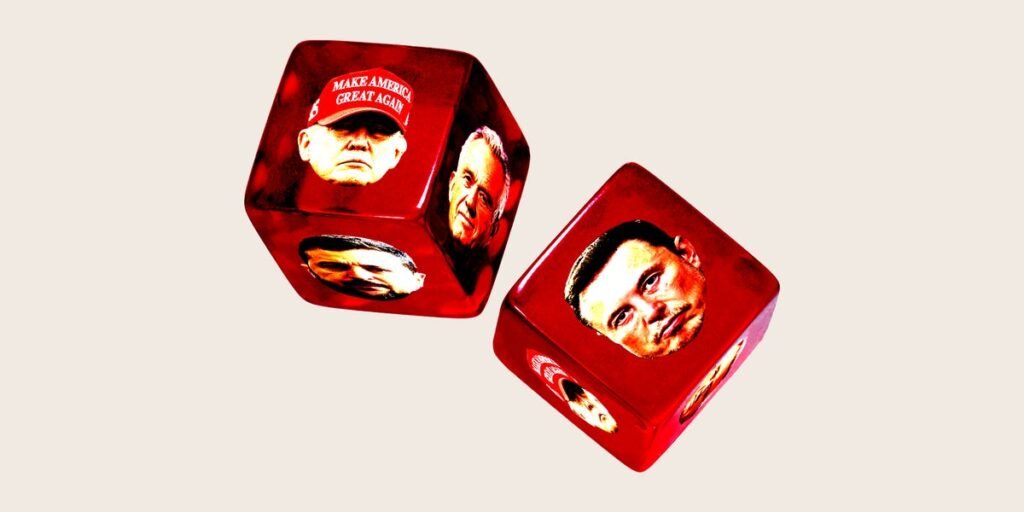The polls were wrong, again. Nate Silver ran 80,000 simulations of election outcomes and found that Vice President Kamala Harris won in 40,012 of them. The race that Donald Trump ultimately ran away with was deemed neck and neck for days — unless you looked at the prediction markets.
Election betting on Kalshi and Polymarket had been favoring Trump for weeks. Days before the election, Polymarket odds showed Trump had a 60% chance of winning. The electorate took notice: Kalshi and Polymarket soared to the top of Apple’s App Store on Tuesday evening.
On Wednesday morning, the platforms claimed that their victory was as resounding as Trump’s.
“Last night, Kalshi showed how prediction markets can decisively outperform polls and traditional media,” Kalshi posted on X. “Not only did our markets offer a sharper view of the Election, we called it before anyone else.”
“Make no mistake, Polymarket single-handedly called the election before anything else,” Shayne Coplan, the company’s 26-year-old CEO, posted. “The global truth machine is here, powered by the people.” He says Polymarket conveyed a Trump victory two to three hours ahead of traditional media. “It is an inflection point in news and politics,” he told CNBC. “Trust the markets, not the polls,” he said on X.
Should we? And can the prediction markets ride their momentum now that the election’s over?
Polymarket and Kalshi have been building quietly, and they view elections as their chance to go mainstream. Coplan has said he was running the crypto-based company alone in his bathroom in 2020. Kalshi was founded in 2018 by two MIT grads. Both became household names just this fall. In addition to politics, people can bet on sports, business, and pop culture, with contracts about whether Elon Musk will post on X a certain number of times in a week and whether Taylor Swift and Travis Kelce will get engaged. In late October, Robinhood began offering election betting. There’s also PredictIt, which is operated by Victoria University in New Zealand but focuses on US politics.
Xavier Sottile, the head of markets at Kalshi, tells me that election night exceeded even the high expectations Kalshi had set for itself. A US appeals court lifted a freeze on Kalshi in October, allowing the site to list contracts that allow for bets on the election. More than 500,000 people were using Kalshi concurrently on election night — both to place bets and to peer into the results of the election. Bettors poured $476 million into the presidential race’s outcome on Kalshi. Polymarket’s site says more than $3.6 billion was spent betting on the race, though users in the US weren’t legally allowed to participate.
“Nothing is as salient as the presidential election,” Sottile says. “But there are things that get pretty salient in the national news.” Already Kalshi is adding contracts on outcomes of the second Trump administration, like whether Musk or Robert F. Kennedy Jr. will be given a Cabinet position, whether tips will no longer be taxed, or whether Trump will be impeached for the third time. (Polymarket is taking wagers on whether Trump will end the war in Ukraine during his first 90 days in office, whether he’ll declassify documents related to the assassination of John F. Kennedy, and whom he may pardon.) The sum of the bets being placed on these are a fraction of the election bonanza, but Sottile says there are enough of them, and enough interest, for Kalshi to seize the smaller moments.
While the prediction markets are hailing themselves as oracles better equipped to predict the future than polls, Sottile says this isn’t the end of polling, which helps inform the odds on Kalshi. But, Kalshi does “want to replace polling,” he says, “in the sense that what are you checking every morning to figure out what’s going on?”
The argument for prediction markets’ accuracy is that people are more decisive with their money, picking outcomes they think will happen, not just ones they want to happen. “When they actually put their money behind what they say, they’re putting themselves out there,” says Koleman Strumpf, a professor of economics at Wake Forest University. He predicts that prediction markets will be around for 2028 — and they’ll be bigger. They’re also ways to distill the daily news cycle. Rather than reading several news stories about RFK Jr.’s chance of having a Cabinet position, people can turn to the markets. Instead of following each presidential poll, you can see information aggregated as odds on Polymarket. “The stuff I can learn from these markets is incredible,” Strumpf says.
Prediction markets are “going to attract people who want to influence public perception,” Broughel says.
The betting markets are “not a silver bullet,” James Broughel, a senior fellow at the Competitive Enterprise Institute, says. “They have their own imperfections, just like all of the other metrics do.” While the markets nailed that outcome, they didn’t forecast the popular vote as precisely: On Polymarket at 7 p.m. on Tuesday, Trump had just a 28% chance of winning. Kalshi wagers on the popular vote didn’t favor Trump until 11 p.m. The platforms have raised concerns about whether individuals with fat pockets can sway politics. The French trader who pumped more than $30 million into Polymarket is thought to have made $85 million when Trump won. But this wasn’t an indication of support: The man, who is known only as Théo, told The Wall Street Journal that he had “absolutely no political agenda” but believed Trump would win.
Kalshi says that it ensures that all contracts on its site have “minimal risk of manipulation” and that it does not incentivize “harmful behavior.” The platform bans trading on war, assassination, and illegal activity, and it bars people with insider information on the contract from participating. (For bets on politics, that can include campaign staffers and donors.) Polymarket did not respond to requests for comment for this story. In a note on an available contract about whether Iran will strike Israel — on which more than $1 million has been traded — Polymarket says, “After discussing with those directly affected by the attacks, who had dozens of questions, we realized that prediction markets could give them the answers they needed in ways TV news and Twitter could not.”
Prediction markets are “going to attract people who want to influence public perception,” Broughel says. Instead of spending money on TV ads or donating, supporters of certain political candidates may find ways to place wagers to use their influence. “I suspect as these markets grow more prominent, it’s possible their usefulness will decline,” Broughel added. Eighty-five percent of people who’ve placed bets on Kalshi are men, and more than 70% of people are under 40, according to the company. Those stats aren’t surprising: Research suggests that men are more likely than women to gamble, buy stocks, and trade crypto. But Sottile argues that even if the platforms become more mainstream and diversified, prices and predictions will likely stay similar, as there are lots of people trading on the big election issues to balance out differing viewpoints.
As we wait to see how Polymarket, Kalshi, and their competitors fare in 2028, there are wagers to place on questions like whether Trump will bar transgender athletes from participating in sports or whether The New York Times gains a certain number of subscribers. Don’t bet on these prediction markets going away anytime soon.
Amanda Hoover is a senior correspondent at Business Insider covering the tech industry. She writes about the biggest tech companies and trends.
Read the full article here

















